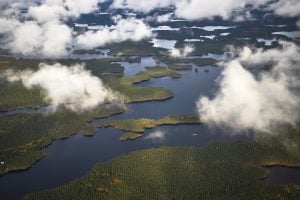
Environment
Inside the fight to protect the Arctic’s “Water Heart”
How the Sahtuto’ine Dene of Déline created the Tsá Tué Biosphere Reserve, the world’s first such UNESCO site managed by an Indigenous community
- 1693 words
- 7 minutes
This article is over 5 years old and may contain outdated information.
Travel

If you asked most Canadians where you’d find a place called Eeyou Istchee, they’d respond with a blank stare. And I have to admit that I didn’t know either until last summer. That’s when I learned that Eeyou Istchee is the Cree name for the traditional territory on the east side of James Bay. It translates as “the people’s land,” and it represents a chunk of Quebec about the size of Germany.
Much of Eeyou Istchee is thick bush, but the region also includes nine thriving Cree communities, four of which sit right on James Bay itself. Many of these have airports, and all but one are linked by road to the south, yet very few tourists come to this part of Canada. That’s partly because of the region’s remoteness, but it’s also because the Cree haven’t gone out of their way to encourage people to visit.
In recent years, though, that’s been changing. For nearly two decades now, the Cree have been slowly but surely developing plans to promote their territory for responsible tourism. They started by building the infrastructure needed to receive visitors — most of the nine communities have new or improved hotels and restaurants. Now the goal is to offer tours that combine cultural experiences with the area’s rich history and outstanding natural opportunities.











Are you passionate about Canadian geography?
You can support Canadian Geographic in 3 ways:

Environment
How the Sahtuto’ine Dene of Déline created the Tsá Tué Biosphere Reserve, the world’s first such UNESCO site managed by an Indigenous community

People & Culture
Uprooted repeatedly by development projects, the Oujé-Bougoumou Cree wandered boreal Quebec for 70 years before finding a permanent home. For some, the journey continues.

People & Culture
Indigenous knowledge allowed ecosystems to thrive for millennia — and now it’s finally being recognized as integral in solving the world’s biodiversity crisis. What part did it play in COP15?

History
A look back at the early years of the 350-year-old institution that once claimed a vast portion of the globe